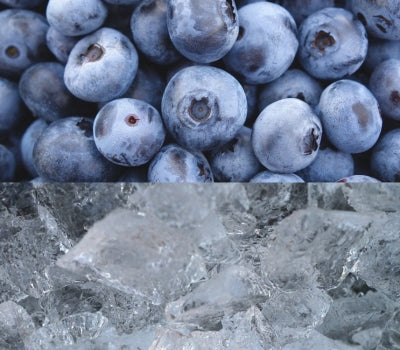This post comes from the blog over at Carmichael Training systems. We recently partnered with them to share knowledge and provide FLUID Recovery for their athletes and training camps. If you’re in need of top-level coaching for any sport, we definitely recommend checking them out.
In the continuum of training and recovery methods that ranges from “absolutely beneficial” to “definitely harmful”, ice baths and antioxidants fall squarely in the middle. There’s not much evidence to back up claims of substantial benefits, but little evidence showing them to be harmful, either. That doesn’t mean they’re useless; it just means you need to understand what you’re using them for.
Do Ice Baths Work?
For many years, coaches and sports scientists have debated the efficacy of ice baths for post-workout recovery. The primary rationale for immersing your legs in an ice bath is to reduce inflammation and minimize the onset of delayed onset muscle soreness (DOMS). The big question has always been whether achieving either of those goals actually enhances recovery.
Current science seems to indicate that ice baths may not offer the expected benefits, because the very inflammation they seek to reduce may be crucial for stimulating the training adaptations athletes seek. By reducing inflammation you may actually be hindering the positive adaptation to training stress. Alex Hutchinson, author of the Sweat Science blog for Runner’s World (and now Outside), addressed this subject and the relevant studies quite well in this 2015 article and this update in 2016.
The most important takeaways regarding ice baths, in our view, are that not all inflammation is bad and that inflammation is not the same thing as swelling. Inflammation, which is a widespread response to stress involving many difference cells and signalers, plays a necessary role in promoting positive adaptation to training. Swelling, or edema, is the accumulation of fluid in or around tissues. The good news from recent science is that ice baths may help reduce swelling by constricting blood vessels, without having much impact on the inflammatory response to exercise. The not-as-good news is that ice baths don’t appear any better for reducing swelling than a purposeful cooldown at the end or a workout/race, or a walk on rest days.
A circumstance that may still warrant cool- to cold-water immersion could be following exercise in high-temperature environments. Instead of focusing on reducing inflammation, the rationale for proactive post-workout cooling following exposure to high temperatures would be to facilitate the reduction of elevated core temperature.
Should You Load up on Antioxidants?
For a long time nutrition supplement companies have pushed the idea that antioxidant supplementation is crucial for blunting the damage that free radicals wreak on cells throughout your body. Free radicals are a byproduct of processing oxygen in the body, and since athletes take in and process a lot more oxygen than sedentary people, we are subjected to a lot more oxidative stress. Free radicals are thought to damage cells to the point that people with high levels of oxidative stress are more likely to develop cancer. As a result, it seems to make perfect sense that athletes should load up on more antioxidants to neutralize the detrimental effect of generating more free radicals.
The problem with this logic is that if free radicals were as cancer-causing as they are made out to be, the incidence of cancer in elite athletes would be substantially greater than it is in the general population because elite athletes are subjected to substantially more oxidative stress than the general population. In reality, that’s not the case.
Part of the reason elite athletes don’t suffer greater incidence of cancer due to oxidative stress may be due to the fact they naturally consume more antioxidants through diets rich in fruits and vegetables, and diets that are high in overall caloric intake (which further increases their intake of antioxidant-containing fruits and vegetables). Current science does not indicate that athletes – or the general public – should reduce antioxidant intake, but it does call into question whether proactive supplementation provides additional benefits.
The potential problem with proactively loading up on antioxidants is similar to the issue with ice baths: you may be blunting a positive and necessary stimulus for adaptation. Some exposure to free radicals results in a strengthening of your body’s natural defenses against oxidative stress, making muscles more resistant to the damage free radicals can cause. As a result, experienced athletes and high-level athletes are better able to naturally neutralize free radicals than a less-fit “weekend warrior” who only exercises occasionally. For experienced and trained athletes, over-supplementation may hinder training adaptation, whereas increased intake (or minor supplementation) could potentially be beneficial for weekend warriors.
Taking a big-picture view, in light of current research, our advice on antioxidants – to athletes at any level – is to focus on consuming more fresh, colorful fruits and vegetables. There is no downside to consuming more cranberries, blackberries, blueberries, red beans, kidney beans, apples, and plums (all foods high in antioxidants). What may be unnecessary is purchasing and consuming concentrated forms of antioxidants on top of what you’re getting from a diet rich in fruits and vegetables. And your worst choice would be to load up on antioxidant supplements while reducing consumption of fresh, colorful fruits and vegetables.
References:
Micah Gross, Oliver Baum & Hans Hoppeler (2011): Antioxidant supplementation and endurance training: Win or loss?, European Journal of Sport Science, 11:1, 27-32



